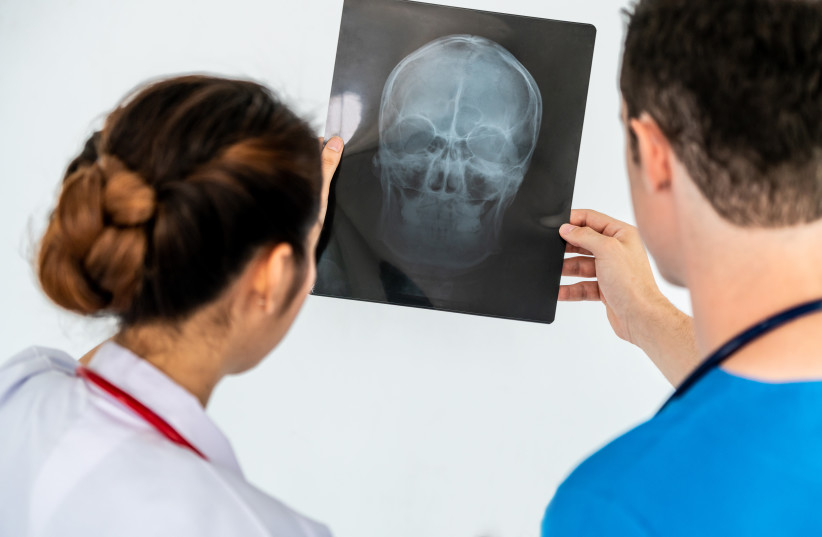Women’s life expectancy is higher than that of men, but at the same time, the number of healthy life years of men is higher than that of women.
These data were included in the first-ever report on 40 indicators of optimal aging in Israelis aged 65 years and over by the Central Bureau of Statistics (CBS). It found that when comparing 2015 and 2020, there was improvement in 32 indicators and a deterioration in seven. The 29-page report was issued by the bureau in Hebrew.
The incidence rates of all types of cancer have decreased compared to 2019. However, among men, there was a rise in the rate of prostate cancer, compared to 2015, in the percentage of diabetics and in the percentage of dialysis patients whose kidneys failed.
Rates of diabetes, stroke and dialysis treatments among men are higher than those of women – but the percentages of women who reported depression and disability in basic daily activities are higher than those of men.
Among men, out of 43 indicators and sub-indicators, an improvement was recorded in 27 compared to the base year seven years ago. There was a deterioration in 11 – six from the health field and four from the healthy lifestyle field. No change was recorded in five indicators.

Among women, there was an improvement in 31 indicators and sub-indicators, compared to the base year, among other things an improvement in all health indices. A decline was reported in six indicators, most of them from the field of healthy lifestyle, and no change was found in six others.
Jews' and Arabs' health
Among Jews and others, there was an improvement in 33 indicators and sub-indicators compared to the base year, of which 15 were in the health field. In five indicators, there was a deterioration – two from the field of health and the rest from the field of active lifestyle; in five others, no change was recorded.
Among the Arabs, an improvement was recorded compared to the base year in 22, of which 10 are from the field of health. A deterioration was recorded in eight indicators, seven of them from the health sector. No change was recorded in three indicators.
Both among men and among women there was a decrease in the feeling of loneliness. Women feel loneliness twice as much as men, and Arabs suffer from loneliness more than Jews and other sectors in the Israeli population.
The percentage of men who expressed satisfaction with life is higher than that of women. According to the CBS findings, the quality-of-life score among Arab women was the lowest.
Household inequality
In households where at least one member was 65 years old or older, there was a decrease in the percentage of those reporting that they are not managing financially. This percentage is particularly high in Arab households where at least one person is that old.
The Gini Index – developed by the Italian statistician Corrado Gini in 1912 to serve as a gauge of economic inequality by measuring income distribution – is higher among households in which at least one individual is 65 years of age or older, compared to all households in the country’s general population.
In 2019, the median net monetary income per standardized person among households with at least one individual of that age was similar to the income of all households in the population.
The CBS study found that since 2015, there has been an increase in the percentage of those who subjectively assess their health as very good or good. Compared to that base year, there was a decrease in the percentage of those receiving the flu vaccine and an increase of those over 65 who got the pneumococcal vaccine.
There was a decrease in the percentage of older people who experienced significant involuntary weight loss, underweight or obesity. Women tend to suffer more from such an abnormal weight. There was a high score in all population groups in terms of satisfaction with their social networks (those who maintain various relationships among themselves, such as family members or friends). Among Arabs, the score was higher than the score among Jews and others.
Both among older men and among women, there was an increase in the employment rate compared to the base year, with a two-fold gap in favor of the men. The rate among Jews and others is three times higher than among Arabs. Arabs feel appreciation from family members and satisfaction with relations with neighbors more than Jews and others.
The percentage of Jews and others engaged in individual leisure activities is higher than among Arabs. The percentage of Israeli households that have access to a home computer, a touch computer or a tablet is lower among households with at least one individual over the age of 65 compared to all households. But there has been an increase in the percentage of Internet users, including via smartphones.
There has also been an increase in the percentage of users of online government services – by men almost twice that of women; the percentage of use by Jews and others was almost four times more than that of Arabs.
